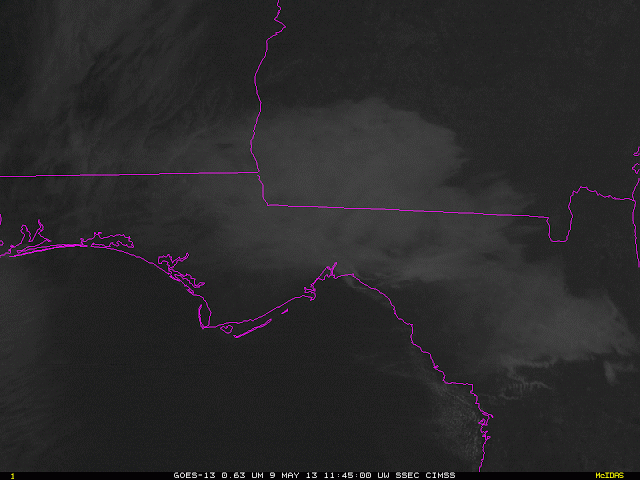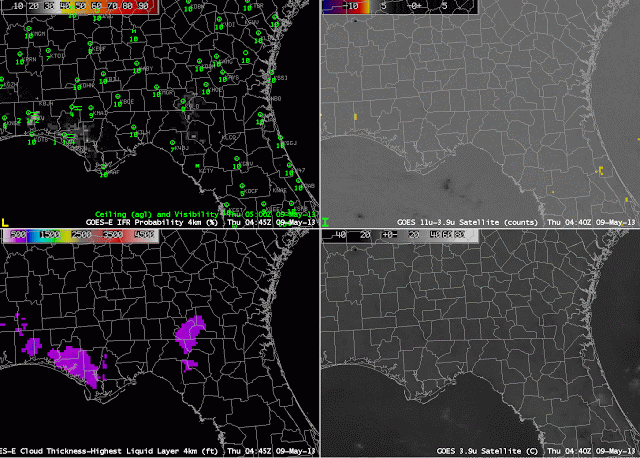GOES-R Fog/Low Stratus fields can be used to predict fog dissipation times, and in cases of radiation fog, the IFR probability fields sometimes give advance notification of developing IFR conditions before the traditional brightness temperature difference field has a strong signal.
In the example above, for instance, IFR probabilities at 0715 UTC suggest IFR conditions are possible over Perry, FL — in Taylor County, Florida — (where IFR conditions are observed) before the Brightness Temperature Difference field has a signal. Predictions of IFR conditions via that GOES-R fields before the Brightness Temperature Difference field has a strong signal are common.
The GOES-R Cloud Thickness observed just before twilight conditions is used with this scatterplot to predict dissipation time. In the example above, thicknesses are near 1000 feet over northern Florida and southern Georgia, so fog will dissipate in between 2 and 4 hours, according to the points plotted, or in a little over 3 hours according to the best linear fit through the plotted points. The visible imagery animation, below, shows the fog dissipating as expected from the scatterplot.
 |
| GOES-13 Visible Imagery over northern Florida |

